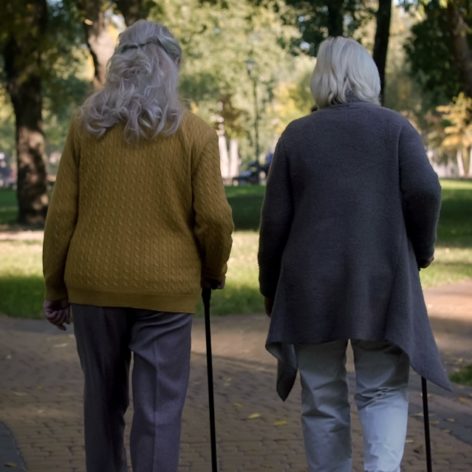Malnutrition
Malnutrition has adverse effects on tissue/body form and function, such as body weight and body composition, and on clinical outcomes.1Elia M, BAPEN. 2000. Ref Type: Report Published on 2000 These latter include physical and psycho-social consequences such as impaired immune response, impaired wound healing, reduced muscle strength and fatigue, apathy and depression. Malnutrition in hospitalised patients is associated with higher complication rates, longer hospital stays and increased mortality risk.2Medical Nutrition International Industry (MNI) (2018). Better care through better nutrition: Value and effects of Medical Nutrition. Retrieved from Published on 2018 … Continue reading
The impact of physical frailty on older people
Physical Frailty is seen as a geriatric syndrome with multiple causes and contributors characterised by diminished strength, endurance and reduced physiologic function, and increasing an individual’s vulnerability for developing disability.3Fried LP, et al. Journal of Gerontology. Published on 2001;56A(3):M146-M156 ,4Morley J, et al. Frailty consensus: a call to action. JAMDA. Published on 2013: 14(6),392-7 Malnutrition, inactivity and comorbidities have a particularly high adverse impact in older persons and are risk factors for sarcopenia and physical frailty.It is thought that up to 21% of community-dwelling elderly are physically frail.5Santos-Eggimann B. et al. J Gerontol A Biol Sci Med Sci. Published on 2009, 64(6):675-681  Frail people are vulnerable to minor stressors such as a fall, which can lead to disproportionate changes in their health status, and puts them at risk of adverse effects such as fractures.6Lancet, Published on 2013 March 2; 381(9868): 752–762 https://www.ncbi.nlm.nih.gov/pmc/articles/PMC4098658/ The loss of muscle mass, strength and function, called sarcopenia, is considered by experts in the field as a key factor in the development of physical frailty.7Landi F, et al. Clin Geriatr Med. Published on 2015 Aug;31(3):367-74 https://www.ncbi.nlm.nih.gov/pubmed/26195096 As one of the main causes of functional decline in the elderly, sarcopenia has a high clinical impact, affecting the status and recovery of a person’s mobility, independence and quality of life.
Frail people are vulnerable to minor stressors such as a fall, which can lead to disproportionate changes in their health status, and puts them at risk of adverse effects such as fractures.6Lancet, Published on 2013 March 2; 381(9868): 752–762 https://www.ncbi.nlm.nih.gov/pmc/articles/PMC4098658/ The loss of muscle mass, strength and function, called sarcopenia, is considered by experts in the field as a key factor in the development of physical frailty.7Landi F, et al. Clin Geriatr Med. Published on 2015 Aug;31(3):367-74 https://www.ncbi.nlm.nih.gov/pubmed/26195096 As one of the main causes of functional decline in the elderly, sarcopenia has a high clinical impact, affecting the status and recovery of a person’s mobility, independence and quality of life.
Frail adults have 6 x the mortality rate of non-frail patients.8Fried LP, et al. Journal of Gerontology. Published on 2001;56A(3):M146-M156
View References
| 1 | Elia M, BAPEN. 2000. Ref Type: Report Published on 2000 |
|---|---|
| 2 | Medical Nutrition International Industry (MNI) (2018). Better care through better nutrition: Value and effects of Medical Nutrition. Retrieved from Published on 2018 https://medicalnutritionindustry.com/files/user_upload/documents/medical_nutrition/2018_MNI_Dossier_Final_web.pdf. |
| 3, 8 | Fried LP, et al. Journal of Gerontology. Published on 2001;56A(3):M146-M156 |
| 4 | Morley J, et al. Frailty consensus: a call to action. JAMDA. Published on 2013: 14(6),392-7 |
| 5 | Santos-Eggimann B. et al. J Gerontol A Biol Sci Med Sci. Published on 2009, 64(6):675-681 |
| 6 | Lancet, Published on 2013 March 2; 381(9868): 752–762 https://www.ncbi.nlm.nih.gov/pmc/articles/PMC4098658/ |
| 7 | Landi F, et al. Clin Geriatr Med. Published on 2015 Aug;31(3):367-74 https://www.ncbi.nlm.nih.gov/pubmed/26195096 |



